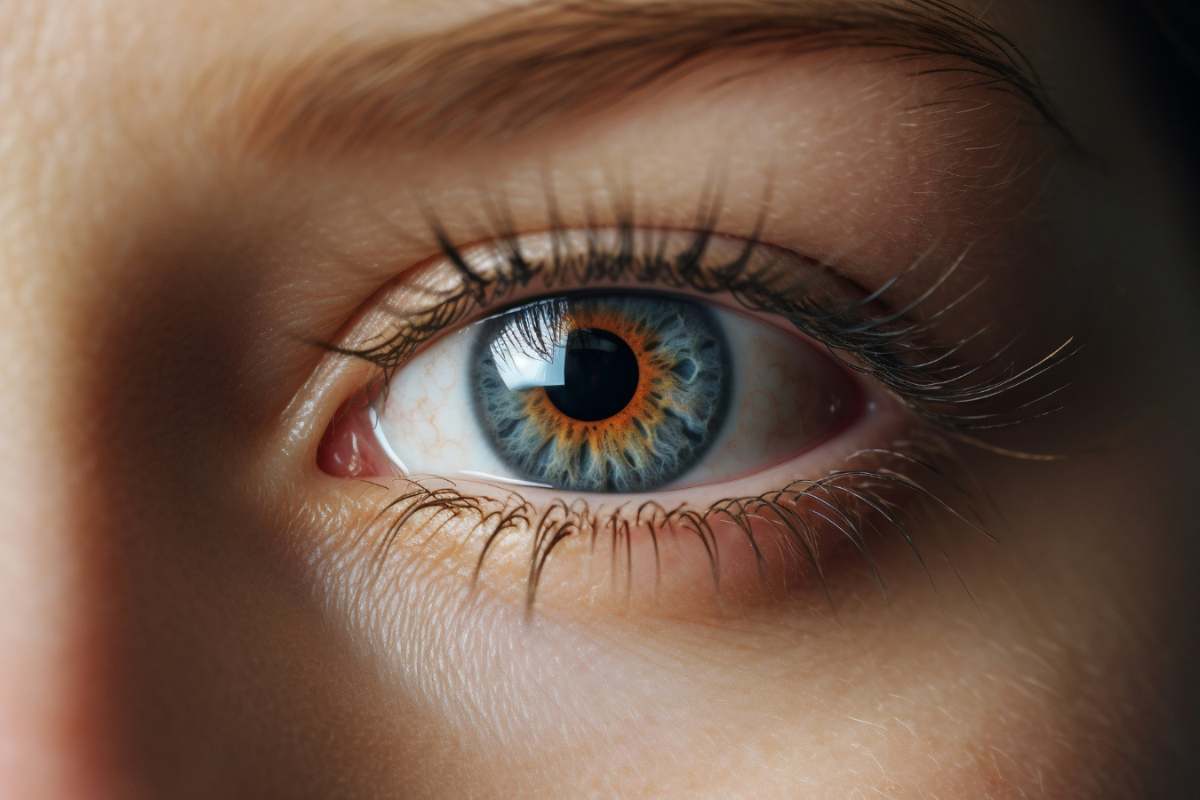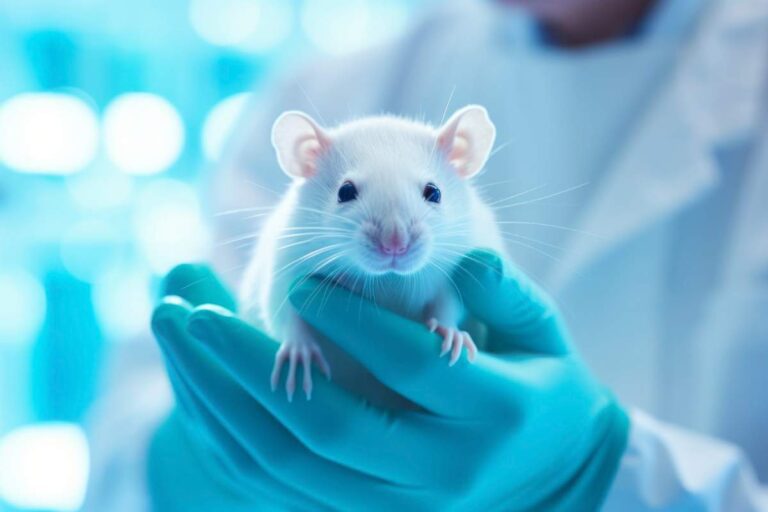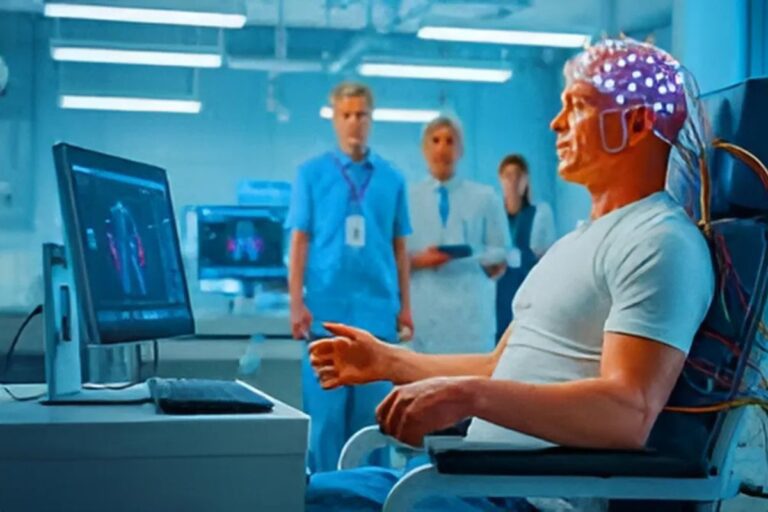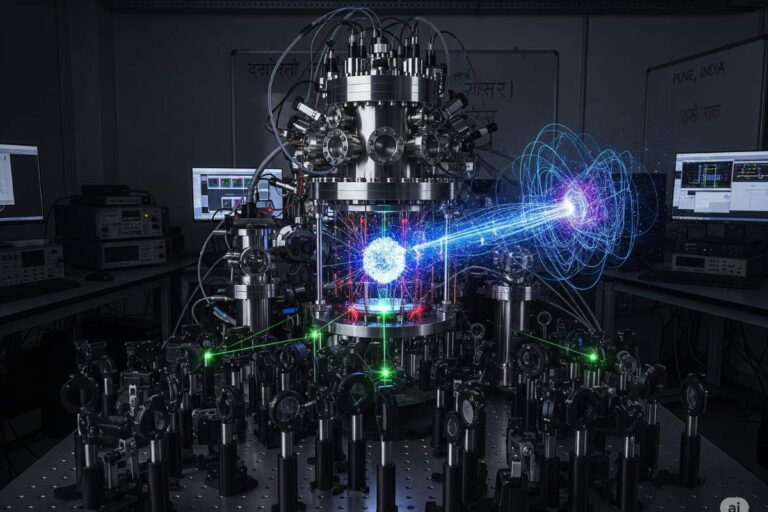A New Era for Memory Science
Human memory, though a vital function, is by its nature fallible. The formation of false memories represents an unexpectedly widespread occurrence, and one with profound ramifications, especially in high-stakes settings such as courtroom evidence where the validity of recollections can have immense impact. Such inherent unreliability of subjective memory reports makes it imperative that objective, non-invasive methods for evaluating memory quality and accuracy be developed.
Pupillometry: A New Objective Measure
New developments in cognitive neuroscience are uncovering that the small, automatic shifts in pupil diameter can provide a novel and objective physiological marker of memory accuracy and quality. This emerging field, called pupillometry, has enormous potential to transform the comprehension and assessment of memory in a range of real-world settings. Identification of pupil dilation as a sign of memory accuracy is a notable change from a dependence on purely behavioral or self-report measures to the inclusion of physiological measures. Conventional assessment of the accuracy of memory tends to rely on self-reports, for example, “remember/know” judgments, or on performance behavior.
These, however, can be subject to biases, the frequently illusory confidence/accuracy relationship, or even deliberate malingering. In forensic contexts, for instance, eyewitness testimony, while compelling, is demonstrably unreliable, a fact underscored by numerous wrongful convictions overturned by objective DNA evidence. By providing a physiological, involuntary measure, pupillometry offers a pathway to bypass some of these subjective limitations, potentially yielding a more direct and unbiased assessment of cognitive states related to memory.
This change in method takes the field closer to a more objective, biologically-based understanding of the quality of memory, similar to the revolutionary effect of DNA evidence on forensic science. Although this technique holds great promise, it is necessary to appreciate that pupillometry is an emerging field and needs additional validation to uniquely identify specific cognitive processes from other influencing factors, e.g., overall arousal or emotional states.
The Historical Perspective: Pupil Dilation as a Brain Measure
The connection between pupil dilation and brain activity has been of interest to scientists since the 1960s, as early studies reported that pupils become wider when there is intense thinking, problem-solving, or concentrated attention.
Landmark studies by authors like Eckhard Hess and Daniel Kahneman showed that pupil diameter grew with proportion to the complexity of mental arithmetic tasks and the number of digits people were asked to maintain in working memory. These early studies set pupil dilation as a valid physiological measure of transient cognitive load.
The “Pupil Old/New Effect”
The breakthrough came in the 1970s with the realization that pupils also get enlarged when a person identifies something already seen before. This effect was subsequently officially called the “pupil old/new effect” by Võ et al. (2008). The effect, having been replicated continuously in various follow-up experiments, suggests a basic process of recognition.
Graded Cognitive Effort and Memory Retrieval
The “pupil old/new effect” is not a simple, all-or-none measure of recognition (i.e., merely “old” or “new”); instead, it represents a degree of cognitive effort, specifically associated with retrieving certain contextual information.
Võ et al. (2008) supposed that the greater dilation for items previously encountered represents the retrieval of contextual information, a process assumed to be more attention-consuming than the rejection of novel objects. This understanding is consistent with dual-process models of recognition memory, which make a distinction between “recollection” (recovery of particular episodic detail) and “familiarity” (a sense of knowing generally, but without specific detail). Recollection, by definition, requires higher cognitive processes than a feeling of familiarity.
The size of the pupil dilation in the pupil old/new effect then offers a physiological analogue of the richness or depth of retrieval from memory. A more extreme dilation implies not only a simple “I’ve seen this before” but an extended “I recall where and when I saw this,” reflecting enhanced cognitive involvement in the retrieval of particular incidents. This graded response set the conceptual foundation for subsequent memory precision research. Yet it must be noted that certain studies show that the pupil old/new effect could also be an expression of perceptual fluency and that it may not consistently and accurately separate accurate from inaccurate familiarity, highlighting the multifactorial and complex nature of pupillary responses.
Precision in Recall: The Albi & Pajkossy Study Unpacked
A new study conducted by Ádám Albi and Péter Pajkossy of the Budapest University of Technology and Economics has made further progress in understanding the connection between pupil dilation and the accuracy of memory. Their research, published in the Journal of Experimental Psychology: Learning, Memory, and Cognition, used an original experimental design to explore the connection.
Experimental Design and Methodology
Twenty-eight volunteers took part in their experiment.
During the initial learning session, learners were shown 80 fairly rare two- or three-syllable Hungarian words, one at a time at a particular position on an imaginary circle in the middle of a computer screen.
The spatial encoding task was important, since it enabled the researchers to get a continuous measure of memory accuracy, rather than just binary “old/new” decisions. Throughout the later test phases, participants saw a combination of 40 of the words that they had previously learned and 40 new words, all displayed at the center of the screen. For each word, participants made an “old/new” recognition judgment. If they classified a word as “old,” they were then asked to place a slider along the invisible circle to mark its original position, thus giving a direct measure of the accuracy of their spatial memory for the word. The researchers monitored the participants’ pupil sizes throughout this entire recall process extremely carefully.
Key Findings: Linear Relationship and Dual Components
The findings of the Albi & Pajkossy investigation were persuasive, offering decisive proof of an immediate, quantitative relationship between pupil dilation and memory accuracy. As predicted by earlier studies, pupils of participants dilated more when correctly recognizing a word than when correctly classifying a word as new, supporting the established “pupil old/new effect.”. Most importantly, the research showed a linear connection: the more accurate a participant’s recollection of the initial location of a word, the bigger their pupil dilation.
This observation directly proved that pupil dilation is not only an indicator of a general feeling of familiarity, but also of the distinctness and accuracy of a recalled detail.
In addition, even when volunteers didn’t know the precise position but still identified a word as familiar, their pupils enlarged more than when they read an entirely new word. These results imply that pupil dilation during the retrieval of memory taps into two different aspects of memory. The first is related to mere word recognition, a sign of familiarity. The second, more subtle aspect, taps the quality and accuracy of recalled source information, including the word’s initial location, with increasing magnitude of dilation proportional to increasing accuracy of that recollection.
Implications for Memory Models
The Albi & Pajkossy work, therefore, offers strong physiological support that retrieval of memory is an ongoing process and not a simple “hit or miss” and that dilation of the pupils can measure the accuracy of that retrieval. This opposes threshold-based models of recognition memory, which may hypothesize a straightforward “familiar” or “not familiar” condition. Rather, the linear correlation seen is consistent with models in which memory precision or strength is a continuum.
The separation of two different components of the pupil old/new effect, recognition per see, and source information quality, coheres with dual-process models of memory, but introduces a quantitative aspect into the process of recollection.
The student’s response, then, is an analog signal of the quality with which a memory trace can be retrieved and used for specific detail, and it suggests that retrieval from memory is effortful and dynamic.
The pupil is a real-time, objective measure of effort and quality of retrieved information, and it has important ramifications for measuring memory in circumstances where the subjective report would be suspect.
Key Findings of the Albi & Pajkossy (2025) Study
| Aspect | Description |
|---|---|
| Participants | 28 volunteers |
| Stimuli | |
| Encoding Task | Task Words presented individually at specific locations on an invisible circle |
| Retrieval Task | Task Words are presented individually at specific locations on an invisible circle |
| Measurement | Continuous pupil size tracking during retrieval |
| Key Results | Pupil dilation for recognized words (Pupil Old/New Effect). – Linear relationship between pupil dilation and the precision of location recall. – Dilation for familiar words (even without precise recall) was greater than for new words. – Suggests two components: mere recognition (familiarity) and precision of contextual details (recollection). |
The Orchestration of the Brain: Locus Coeruleus-Noradrenergic System and Attention
The neurobiological basis for pupil dilation in cognitive effort and memory retrieval is largely due to the locus coeruleus-noradrenergic (LC-NA) system. The locus coeruleus (LC), a small nucleus located in the brainstem, is the brain’s main source of norepinephrine (NE).
Pupil Dilatation as an Index of LC Activity
This system is fundamentally engaged in the regulation of arousal, attention, and a broad range of cognitive operations, such as memory, especially during the processing of salient events. Notably, pupil dilation has been recognized as a valid physiological marker of LC activity, with the LC neuron firing rate having a high correlation with pupil diameter changes. This tight coupling makes pupillometry stand as a non-invasive stand-in for the measurement of LC-NA system engagement.
LC-NA System and Memory Consolidation
The influence of the LC-NA system penetrates far into memory consolidation and retrieval processes. Phasic LC activity, defined by short, transient bursts of firing, plays a key role in signaling contextual surprise and the encoding of new memories. They are especially crucial in mediating the effect of “event boundaries”–context changes or surprises–on memory. Upon expectation violation, such phasic LC responses indicate prediction errors that generate a “network reset.” This reset reconfigures functional brain networks to favor the processing of new information, which facilitates disambiguating representations of temporally proximal contexts, a function termed pattern separation.
LC Projections to the Hippocampus
In addition, the LC has high-density neuronal projections to the hippocampal dentate gyrus (DG) subfield, a brain area that plays an important role in pattern separation. The activation of LC during event boundaries is found to correlate with increased left DG temporal pattern separation, implying that such separation processes are selectively activated when differentiation is required.
Attentional Salience Theory and Adaptive Resource Allocation
One of the most influential theoretical frameworks, the Attentional Salience Theory, suggests that vivid memory requires attention, which engages the LC-NA system, which in turn causes dilation of pupils. This system increases transient attention, and its activation is associated with enhanced attentional processing and more precise identification of the target in visual tasks. The correlation between accuracy and dilation of pupils that has been observed in attentional tasks provides further evidence of the central role of the LC-NA system.
The LC-NA system is a dynamic director of cognitive resources whose pupil dilation is the perceptible output, mirroring the brain’s adaptable reaction to memory demands and environmental shifts.
The complex relationship among arousal, attention, memory, and pupil dilation may be comprehended by recourse to the unifying framework of “attentional salience”. When a memory is accurate or vivid, it per se has high salience and so exerts significant attention. This attentional demand activates the LC-NA system, which then facilitates the necessary cognitive processes, such as pattern separation for detailed recall, to effectively handle that salient information. Pupil dilation, in this context, is the observable manifestation of this internal resource allocation.
Phasic vs. Tonic LC Activity
The “network reset” ability of the LC also highlights an adaptive process: when it comes across new, relevant information or a specific memory detail, the brain rearranges its processing to best integrate or access it. This indicates that the LC-NA system is not just a passive respondent but actively controls brain states to maximize cognitive functioning, especially for challenging processes such as precise memory recall or handling novel information. As such, pupil dilation is not only an index of cognitive processing, but an on-line measure of the adaptive reallocation of attentional resources by the brain to deal with the salience and complexity of the prevailing cognitive task, ranging from the recollection of vivid memories.
This means that pupillometry may be able to monitor not just whether memory is accessed, but how adaptively the brain is processing to access it. It is also worth taking into consideration the difference between phasic (brief) and tonic (prolonged) LC activity. While phasic bursts are very closely associated with attention and separation of memory, increased tonic LC activity has been seen to be associated with reduced arousal responses at boundaries and possibly with impaired event processing. This serves to illustrate the intricate and multifactorial nature of the function of the LC-NA system, which can be disrupted, and this has clinical implications.
Memory’s Complex Structure: Dual-Process Theories and Pupillometry
Recognition memory has been seen widely through the perspective of dual-process theories, which surmise that recognition is supported by two qualitatively different cognitive processes: recollection and familiarity.
Recollection vs. Familiarity
Recollection consists of the recall of particular episodic details or context information from the initial encoding episode.It is usually described as an “all-or-none” or discontinuous process, evoking associative knowledge, as in recalling where something was viewed, as opposed to simply that it was viewed. Familiarity, on the other hand, is an experience of knowing or sense of “oldness” without recall of particular contextual information.
It is generally thought to be a continuous strength-based process, e.g., recognizing that a face has been viewed before without remembering when or where. The “remember-know” paradigm is an often-employed experimental technique to empirically separate these two processes, where subjects indicate whether recognition judgment is a function of remembering particular details or merely knowing that the item was encountered.
Pupillometry and Dual Processes
Pupillometry has proven to be a useful physiological measure of research into these dual processes. The pupil old/new effect, which describes larger pupil dilation for stimuli that were previously encountered, has been found to discriminate between familiar and recollected stimuli. Larger pupil dilation is always found when recognition judgments are made from recollection of contextual information, as this process is thought to be more attention-demanding than familiarity.
The Albi & Pajkossy finding that pupil dilation is greater for accurate memory (i.e., the memory of location) and even greater for familiar recognition than for new items directly verifies the position that pupil dilation indexes both the rudimentary recognition component (familiarity) and the quality and accuracy of recalled information. This indicates that the pupil old/new effect contains two separate components: one concerning the mere familiarity of a word, and the other concerning the quality of recalled source information.
Differentiating Accurate vs. Inaccurate Familiarity
Although pupillometry is able to distinguish between familiarity and recollection, its efficacy in differentiating accurate from inaccurate familiarity is a nuanced field of study, which highlights the continued improvement of pupillometric interpretation. Pupillary responses are actually able to discriminate between recollected and familiar stimuli. Some studies, however, show that both correct and false familiarity responses may have very similar mean and across-time pupillary responses, and that pupil dilation when feeling familiarity is at least in part due to perceptual fluency. This seeming contradiction points to the complexity of the “familiarity” signal itself.
Familiarity is a feeling of “oldness” produced by a variety of origins, such as perceptual fluency (the ease of processing a stimulus) or real, but unspecific, memory.
If pupil dilation is generally caused by cognitive effort or attentional salience, and correct and incorrect familiarity (such as false alarms) provoke the same amounts of processing effort or perceptual fluency, then the pupil may not discriminate them. Recollection, on the other hand, entails a separate, harder-working retrieval of particulars, resulting in a stronger and clearer pupillary discrimination. Pupillometry is therefore an effective method for distinguishing between the memory process type (recollection vs. familiarity) and the accuracy of recollection, as shown by Albi & Pajkossy. But its utility as a straightforward “lie detector” for familiarity per se (i.e., the ability to discern the truth from the falsehood of familiarity) is constrained by the common cognitive and perceptual processes that can be the basis of both. This has the consequence that uses in sensitive domains like eyewitness evidence need to be approached with great caution, and emphasis must be placed on the accuracy of recall rather than the vagueness of familiarity.
Beyond the Pupil: Eye Movements as a Portal to Cognition
Eye movements are not passive responses to visual input; they are inextricably connected to a broad range of cognitive processes such as memory, decision-making, and problem-solving. The eye-tracking methodology affords uninterrupted, high-granularity access to these processes, providing deep insights into brain functioning and enabling the researcher to see how visual information is selectively acquired and processed.
Eye Movements and Working Memory
In working memory, focusing of attention during visual working memory has been found to consistently affect later long-term memory. It is found from research that it is not the movement of the eyes but the control of the eye movements that can interfere with visuospatial working memory. Eye tracking also indicates that it is the speed of attention deployment that foretells superior later memory performance.
Baddeley and Hitch’s multi-component model of working memory, including its phonological loop, visuospatial sketchpad, and central executive, forms the basis for understanding how various kinds of information are handled and how eye movements would engage with these specialized modules.
Eye Movements in Spatial Memory and Retrieval
Eye movements uncover spatial memory and navigation’s spatiotemporal dynamics of visually-guided planning.In immersive virtual worlds, subjects tune their own eye movements to emphasize information regarding reward locations or the transition structure of the environment, dynamically adjusting to task difficulty. Their rapid “sweeping” eye movements, as seen both forward and backward along planned routes, indicate some kind of mental simulation or “replay” of future paths, similar to the hippocampal replay process. Gaze also tends to concentrate on future “subgoals” (e.g., turns within a route), reflecting hierarchical planning of complicated navigation tasks.
Eye tracking provides specific insight into memory retrieval mechanisms. Free viewing during encoding predicts the quality of later memory; items viewed longer and with more fixations are often recalled better.Eye movements serve to organize visual information in time and space, thus serving as a memory-binding system.
While retrieving visual information, subjects tend to shift their eyes from the relevant external information to empty spaces, a symptom referred to as “Looking at nothing”. This is an indication of attention internally shifted to retrieve the stored memory representation. Throughout this internal computation, earlier encoded patterns of gaze can be reproduced, known as gaze reinstatement. The quality of the retrieved memory is determined by the level of correspondence between the scan path of gaze upon memory encoding and retrieval; the more overlap, the higher the quality memory.
Eye Movements as Active Inference
Eye movements are not passive manifestations of cognitive activity but are part of their operation, actively influencing and expressing the internal mental models and strategies employed for memory, attention, and decision-making. The fact that eye movements are “tightly coupled” with cognition and show attentional focusing in working memory, influencing long-term memory, navigation planning, and internal processing in problem-solving (“looking at nothing”) indicates an underlying function beyond passive reflection. This is consonant with theories of visual cognition, for example,e predictive coding, that suggest the brain constantly constructs and updates a “mental model” of its world. Eye movements, then, can be understood as active inference in the sense that the motor system (eye movements) picks and chooses sensory input selectively to complete predictions and reduce prediction errors.
The “looking at nothing” effect, in which internally, the direction of gaze changes, indicates that the visual system can “practice” or “simulate” visual information even without external input by using its internal models. The association between similar gaze paths and the quality of the memory then suggests that re-living the original view, even in one’s internal world, reinforces or makes more certain the memory trace. In this way, then, eye tracking gives a dynamic, real-time view of how the brain actively constructs and alters internal representations. It implies that the visual system is not merely a passive receiver but an active participant in constructing and remembering our knowledge of the world.
This has deep implications for understanding how human beings learn, remember, and make decisions, as it suggests that the act of looking itself, and the way that one looks, has a direct impact on cognitive results.The gaze reinstatement effect itself provides a strong, objective index of the richness and detail of internal mental imagery upon recall. Although very informative, it is noteworthy that eye movements reflect a variety of factors such as physical properties of stimuli, internal states, and prior knowledge, and therefore experimental design needs to be very specific in order to isolate particular cognitive processes.
Transformative Applications: Real-World Impact of Pupillometry
The understanding derived from pupillometry and eye tracking is opening doors to revolutionary uses in a variety of domains, providing non-invasive and objective methods to examine and promote human cognition.
Benefits of Pupillometry
Pupillometry has several distinct advantages over other neurophysiological recordings, like functional magnetic resonance imaging (fMRI) or electroencephalography (EEG), largely because it is a non-invasive, inexpensive, and straightforward to implement methodologically. These characteristics make it highly suitable for broad dissemination across multiple contexts, ranging from academic laboratory to school classroom and clinical settings. Its portability also provides the potential for more ecologically valid experiment designs beyond laboratory environments.
Applications in Education
In learning, pupillometry and eye tracking hold promising potential for optimizing learning environments and measuring cognitive engagement. Pupil dilation is a reliable indicator of cognitive load, rising with task difficulty and mental effort. This ability can be used to highlight particularly difficult sections in lectures or learning materials, opening up the possibility of developing adaptive learning systems that adjust the delivery of content based on a learner’s real-time cognitive state. In addition, pupillometry is extremely useful and applicable in determining lexical abilities, such as word recognition, retrieval, and semantic activation, and can fit perfectly into conventional psycholinguistic research paradigms. Since it is not invasive, it can be applied across all age ranges. Eye tracking, through the real-time measurement of eye movements and pupil diameters while performing cognitive tasks, provides information regarding attention targets, focus, and problem-solving strategies in educational research, especially in areas such as mathematics education.
Applications in Clinical Diagnosis
Pupillometry is turning out to be a useful biomarker for cognitive processing across different neurological and psychiatric disorders, offering a practical and non-invasive alternative to more costly and time-consuming neuroimaging methods.
In Alzheimer’s Disease (AD), patients have been shown to show less variation in pupil size under varying cognitive load conditions (e.g., digit spans forward vs. backward) than healthy controls.
Such “blunting” of the pupillary response, indicating a generalized decreased pupil response and less variation as a function of cognitive load, may represent a novel potential AD diagnostic biomarker to add to current in vivo biomarkers.This effect is associated with deficits in adrenergic and cholinergic functions, which have been known to affect pupil size in AD.
Applications in Psychiatric and Neurological Disorders
In psychiatric disorders, pupillary motility is explored for its use in the comprehension of cognitive and emotional processing in disorders such as depression, anxiety, and Parkinson’s disease. It may index cognitive deficits, emotional avoidance patterns, and even forecast treatment outcome in cognitive therapy for depression; e.g., lowered levels of pupil dilation for emotional word tasks have been found to predict remission in depressed subjects receiving cognitive therapy. Automated pupillometry has also been investigated for objective diagnosis and monitoring of acute sports concussion and for detection of brain herniation in stroke patients because it is an objective, quantitative, non-invasive, and quick assessment. Automated pupillometry may also supply information about cognitive load and familiarity in the evaluation of feigned cognitive impairment.
Applications in Forensic Psychology
In forensic psychology, pupillometry presents a promising means of objective measurement of the reliability of memory, tackling the serious problem of eyewitness mistakes as a prime source of wrongful convictions. Pupil dilation is partially under voluntary control, making it potentially impervious to coaching or deliberate falsehood. Research has shown that deception tends to involve more cognitive exertion than lying does, which can appear as increased pupil dilation. Pupillometry has the potential to offer information pertinent to performance validity assessment and assist in differentiating genuine cognitive impairment from malingering.
Validation Challenges in Forensic Settings
Nevertheless, despite promising findings in deception detection as observed in some studies, the relationship is multifaceted and subject to confounding variables like general cognitive load and emotional arousal. Although pupillometry is of enormous potential for objective evaluation in high-stakes use such as forensic psychology, its application needs to be validated rigorously to separate memory accuracy from confounding factors of cognition and emotion.
The subtlety that pupil dilation cannot necessarily discriminate accurate from inaccurate familiarity judgements is of quite special significance in forensic usage.
A witness may actually feel they recognize a face, even though it is a mistaken memory or misidentification, without actually remembering specific, detailed details. If both correct and incorrect familiarity responses have an equal cognitive load or perceptual fluency, pupillometry may not be a direct “truth serum.” Deception itself also enhances cognitive load and anxiety, which both cause pupil dilation, and which makes it difficult to separate the exact source of dilation in complicated situations. Thus, its use within forensic environments, specifically in assessing the reliability of eyewitnesses, must specifically address measuring the accuracy of remembered details as opposed to the general recognition or confidence. It can be used as a tool to estimate cognitive effort and access to particular memory characteristics, not as a direct indicator of truth or falsity. The test is in creating paradigms that can consistently isolate the pupillary response of accurate, veridical recall from other processes that trigger dilation as well.
This highlights the necessity of ongoing research and cautious interpretation so as not to exaggerate its present abilities. The non-invasive and low-cost nature of pupillometry renders it extremely desirable, but the scientific community has to guarantee its methodological accuracy and interpretive clarity before its widespread implementation in sensitive domains such as legal evidence.
Diverse Applications of Pupillometry in Cognitive Science
| Domain | Application | Key Contribution/Insight |
|---|---|---|
| Education | Assessing cognitive load, learning engagement, lexical skills, and math problem-solving | Provides objective, real-time feedback for adaptive learning systems; non-invasive and applicable across age groups. |
| Clinical Diagnosis | Alzheimer’s Disease (AD) diagnosis, psychiatric disorders (depression, anxiety, Parkinson’s), Traumatic Brain Injury (TBI), stroke | Serves as a non-invasive biomarker for cognitive processing; aids in predicting treatment outcomes and monitoring neurological conditions. |
| Forensic Psychology | Eyewitness testimony reliability, deception detection, performance validity assessment | Offers an objective measure of memory precision and cognitive effort, less susceptible to conscious control, though requires careful interpretation for veracity. |
| General Cognitive Research | Attention, decision-making, problem-solving, arousal, motivational states, visual cognition | Attention, decision-making, problem-solving, arousal, motivational states, and visual cognition |
Future Horizons and Unanswered Questions
Pupillometry has numerous advantages over other neurophysiological assessments, like functional magnetic resonance imaging (fMRI) or electroencephalography (EEG), mainly owing to its non-invasiveness, affordability, and methodological ease. These factors render it extremely promising for broad application in diverse settings, ranging from research laboratory contexts through educational classrooms to clinical contexts. Its portability also allows more ecologically valid experimental paradigms outside of laboratory contexts.
Challenges and Limitations
Although it holds much promise, several obstacles and questions need to be answered before pupillometry can be fully incorporated into standard applications. One of the major concerns is the specificity of the pupillary response. Although the dilation of the pupil is obviously related to cognitive effort, it can also be affected by an array of other conditions, such as surprise, broad attentional states, emotional arousal, and task-related motivation. Subsequent studies will have to work towards enhancing accuracy and controlling for experimental conditions to conclusively establish whether the pupillary reaction observed is solely attributed to the cognitive effort invested in a particular task, or if it is affected partially by attentional factors or is a more general response to language processing.
Distinguishing Accurate vs. Inaccurate Familiarity
Another area of importance for research includes the capacity for distinguishing accurate versus inaccurate familiarity. As has been alluded to, recent research indicates that pupil dilation cannot consistently distinguish between accurate and inaccurate familiarity judgments. This is especially significant for certain applications in sensitive contexts such as lie detection or assessment of eyewitness testimony, where distinguishing true recognition from false recognition is of vital importance.
Deriving Clinical Norms and Integrating with Other Measures
Clinical norms are absolutely necessary for widespread clinical utility.
This involves creating stable measurements in single subjects and constructing detailed tables of pupil norms for different pathologies, sexes, ages, and ethnicities. Such normative data are needed to make pupil measurements interpretable and clinically relevant. Last but not least, the further merging of pupillometry with other physiological and neuroimaging methods (e.g., EEG, fMRI, galvanic skin response) has huge potential. Integrating all these various biometric measurements can yield a more in-depth and holistic understanding of the intricate interactions between eye movements, cortical activity, and other physiological factors.
Evolving Research Trajectory
The course of pupillometry research is shifting from preliminary correlational results to a more sophisticated comprehension of its underlying neurophysiological mechanisms and its possible role in real-time, adaptive interventions. Early research established the link between pupil dilation and cognitive load or recognition .Later work, for example, the Albi & Pajkossy study, has shown a linear relationship between pupil dilation and memory accuracy. The growing precision in comprehending the function of the LC-NA system is an even better illustration of this development. The research into application in adaptive learning systems and the prediction of treatment outcomes marks a transition away from passive observation towards active, well-informed intervention.
The Overarching Challenge
This suggests that the future of pupillometry is in its ability to offer not only a snapshot of a state of cognition, but a dynamic, ongoing signal that can influence and shape cognitive processes in real-time. This involves creating elaborate algorithms that can untangle the numerous factors affecting pupil size to yield very precise cognitive information, and incorporating pupillometry into devices capable of reacting to a user’s state of cognition, such as in learning tools, human-computer interface systems, or even targeted medicine.
The general challenge for the field is to move beyond simply recognizing “what” the pupil demonstrates to knowing “why” and “how” it can be best used to enhance human cognition.
This also requires establishing more stable, standardized methods and large-scale measurements to create rich normative databases that are essential for everyday clinical and applied environments.
Conclusion: A Deeper Understanding of How We Remember
This scientific odyssey from initial observations of pupil dilation with mental effort to the quantitative measurement of memory quality using pupillometry is a major breakthrough in cognitive neuroscience. The pioneering Albi & Pajkossy research, in establishing a linear correlation between pupil dilation and memory accuracy, presents convincing physiological evidence that our eyes provide an objective, moment-by-moment window into the fidelity of our memories. This improved understanding is rooted in the complex workings of the brain, specifically the locus coeruleus-noradrenergic system, which dynamically coordinates attention and memory operations, with dilation of the pupils serving as its visible physiological signature. By allowing researchers to make distinctions among various aspects of memory, from a general feeling of familiarity to the specific recollection of specifics, pupillometry enriches the understanding of the dual-process nature of recognition memory. The broader implications of this research are extensive, with the potential for radical applications across a wide range of disciplines.
From augmenting learning strategies by making objective judgments of cognitive load and learning engagement, to supporting clinical diagnosis of memory disorders such as Alzheimer’s disease and other psychiatric states, and potentially enhancing the validity of eyewitness testimony in forensic psychology, pupillometry provides a painless and inexpensive means of gaining deeper insight into human cognition.
As persistent challenges remain in fine-tuning methodologies, creating thorough normative data, and identifying the unique cognitive impetus for pupillary responses, the emerging science of pupillometry stands at the threshold of transforming the measurement, comprehension, and eventual support of human memory.
Eyes, in fact, tell much more than the soul; they are becoming increasingly accurate mirrors of the mind’s complex tango with memory.





















